We set out into Prague mid-morning, catching the bus from our campsite to the nearby metro station from where we hopped on for a 20 minute ride into the center of town. As we exited the station, we were greeted by the towering statue of St. Wenceslas in Wenceslas Square. The massive boulevard has a pedestrian strip down the middle with traffic on either side, topped at one end by the dirty-looking National Gallery.
It is an eclectic mix of architectural styles, facades old and new, capitalism and a few remnants of its communist past. Wenceslas Square is the congregation point of many grassroots political reform movements (celebration of the creation of the Czechoslovak state in 1918; suppression of the spring 1968 demonstration against its Communist occupiers; celebration of freedom in 1989) and is still the preferred site for rallies today. And true to its roots, there were a few petitioners at the base of the statue gathering signatures – for what, I'm not sure as I didn’t ask.
We were interested in checking out some theatre while in Prague and so we walked over to a nearby theatre to ask about what was playing. We were in luck that day and managed to get tickets to "The Elixir of Love" opera, a romantic comedy, for our last evening in Prague. Once again, as in Vienna, we were amazed at how affordable quality theater was. We then strolled down the main boulevard past St. Wenceslas taking pictures of our surroundings and following along in our guidebook which was pointing out buildings of particular note. As we made our way to the centre of the old town of Prague, we passed by a food market with a “Trdelnik” stand.
I finally had a name for the delicious, Czech baked good we had had in Cesky Krumlov the previous day. We then hit up a small market but were quite disappointed in it as it was mostly filled with mass produced, kitsch. We didn’t linger there as a result and walked to the nearby main town square. It was a massive square and very crowded with tourists gaping at the surroundings and locals charging about on their business. We stopped to watch a classical instrument band playing modern songs such as the Star Wars theme song, Britney Spears “Toxic” and felt that they were actually quite good. The street performers so far in Prague were definitely among the best we had seen so far on our trip and we would be even further impressed later on that evening.
The façades of the buildings and the astrological clock were quite ornate but I felt that the highlight was the towering spires of the nearby gothic church. They are what I would have imagined Dracula’s castle towers to be like and would have looked quite ominous were they backlit by lightning. Meghan watched my backpack and wallet as I took photos as the square was quite busy and we had been forewarned that pickpocketing is more prevalent here than in some of the other cities we’ve visited so far.
Fortunately, we didn’t have any incidents and I honestly believe that one has to be vigilant no matter where they are since pickpockets operate globally. Having wandered around the square, we made our way west towards the iconic Charles Bridge. The views over the river and the royal castle (now the president’s office) up on the hill were quite beautiful. The bridge is a pedestrian only bridge and it was packed with tourists, tour groups and local vendors and performers. We walked across the bridge enjoying the street performers (particularly the bands with some instruments unknown to us). We also took an initial survey of the souvenir stands because there were some locally made crafts that were a pleasant contrast to the kitsch we had seen earlier that day. We walked the length of the bridge, then turned around and headed back towards the north-east end of the old town towards the Museum of Communism.
We walked back through the main square again, and took a different exit this time around. It was at this time that we happened upon the best street performer that we have seen to-date on our trip, and dare I say, in my lifetime. I’ll let the video do the talking.
Having taken in the show and made a donation (I was even tempted to get a CD but resisted!), we found the museum. It was very dilapidated compared to any of the museums we’ve seen to date. Peeling paint, dust on the exhibits, and poor lighting in a strange way gave the museum more authenticity – almost as if it was a surviving remnant from the Communist days of Prague. The museum was very informative, albeit a bit scattered in terms of the flow. There was a good short video that showed the protests in Wenscelas Square during the Spring Revolution of 1968, followed by the subsequent invasion by Russian tanks rolling down the wide boulevard, and then finally, the eviction of the Russians during the Velvet Revolution of 1989.
One item on display that was interesting was a phone booth from the Communist days with a loud speaker mounted to its top which was used to spread propaganda. Funnily enough, there was an identical phone booth, still functional, in our campsite (minus the loudspeaker)! Another interesting aspect of communism that had never crossed my mind was the detrimental toll it had taken on the environment due to mass, commercial farming with the heavy use of pesticides (although sometimes I wonder if things have really changed that much today after all). When we walked back to Wenscelas square that night to catch the metro back towards camp, we definitely had a much better appreciation for the tragic events and the very unfortunate history of the Czech Republic during the Nazi and Communist reign.
The following day, we headed back into Prague and over Charles Bridge once again. We did a short walking tour through the castle quarter, the part of Prague west of the Charles Bridge around the base of the castle. We stopped off for a quick bowl of soup at a small café – they had a fresh pumpkin soup advertised and it was delicious. We visited the Lennon wall which was painted with many messages. During the communist rule, the wall was seen as a symbol of hope. Each day they would paint over the graffiti from the night before. The fall colours complemented our walking tour very nicely and provided some great photo opportunities.
We then wound our way through the narrow and steep streets up to the castle. We passed by some really neat antique and souvenir shops along the way. We stopped outside the castle on a bench for a quick, sandwich lunch break. It was then we noticed some commotion behind us and turned around to see a wild-looking boar wandering around the small park behind us! A boar, in the middle of the day, wandering around Prague! Now that wasn’t an everyday sight… We stayed clear of the boar and worried about the tourists who were encouraging the boar by feeding it tidbits from their hand! We didn’t stick around to witness any eventual goring, so we proceeded inside the castle gates and picked up our tickets for the castle grounds.
Our tour started with a walk inside the massive, gothic cathedral. I particularly enjoyed the stained glass windows and the ribbed, vaulted arches. At the rear of the cathedral was a grand, silver tomb – not as spectacular as the one in Innsbruck, but still worth a five minute perusal. From there, we made our way into the main castle itself which was essentially bare. There were almost no furnishings and we weren’t allowed to take photos inside. The ground floor was a large ballroom, still used today for concerts and large gatherings. Taking the staircase upstairs led us to various rooms including those originally used by the Czech court when there was a royal family in power.
Of particular interest on the first floor was the room from which the second defenestration (I daresay this one of my favourite words) of Prague took place. A couple of Catholic regents were literally thrown out the window by the ruling Protestant leaders at the time. This is claimed to be the event that triggered the 30 years war of Prague. Exiting the castle, we made our way to an area of the castle grounds known as the “Golden Lane”. This lane was a very tightly packed street, with houses that almost resemble dolls’ houses instead of real homes. When the castle was actively occupied, the Golden Lane housed artisans, craftsmen and servants. Craftsmen included gold smiths, pharmacists, blacksmiths and even fortune tellers. Today, a few of the houses have displays inside them that attempt to replicate what life on the lane might have been like. We ducked in and out of the houses for nearly forty-five minutes, checked out the torture chambers at the end of golden lane, and then finally left the castle grounds heading back over Charles Bridge. It was dark by the time we made our way to the metro station and so we managed to get some really nice photos of the main square all lit up. Back at camp, Megs used the “communist-era” phone booth to phone family back in Canada. It was quite chilly out so as Megs stood there chatting, I whipped up some hot chocolate in the van and brought it out to her at the booth.
Our final day in Prague covered the sights of the Jewish quarter. The first of the sites was a memorial to victims of the Holocaust. The names of hundreds of thousands were painted onto the walls of this synagogue. As we humbly walked through the synagogue, we listened to a recording of the names of the victims being quietly broadcast. The first floor contained an art exhibit from the children of Terezin, a nearby “model” Nazi camp that was really just a façade for a transition point to extermination and work camps further abroad. We exited the synagogue into the Prague Jewish cemetery, in use from the early 15th century.
As you can see from the pictures, the ground is very uneven because according to Jewish custom, graves must not be disturbed and there were far more burials than there was space. Since there wasn’t land available to purchase to extend the cemetery, they piled on layers of soil and continued burying people there. It is estimated that there are about twelve layers of graves and although only about 12,000 tombstones are visible in this very cramped space, some estimates say there are over a 100,000 buried here. It is unlike any other cemetery we’ve ever visited. From the cemetery, we wandered through Josephov (aka Jewish Quarter) towards the oldest synagogue in Prague that has managed to survive through the Second World War. The synagogue was built in 1270 in gothic style and is Europe’s oldest, active synagogue. The main part of the synagogue is mostly below ground and not very large. We sat inside for a few minutes looking at the vaulted ceilings and noticed that there is separate seating for men and women. From there, we visited the Spanish synagogue, which is by far the most ornately decorated of all the synagogues. It is built in the Moorish style and is mostly golden and red inside, with every inch of wall and ceiling covered in very pleasing geometric patterns. In the Second World War, the Nazis used this site as a storage place for all the confiscated possessions of the Jewish citizens of Prague.
By the time we finished in the synagogue, it was late afternoon and the sun was beginning to set. We wandered along the riverbanks towards our last sight for the day – the dancing houses. Having taken a few photos there, we found a place for a quick bite before our evening opera, “The Elixir of Love”, in the National Theatre. The opera house was quite grand inside, although not as much when compared to Vienna, and the seats were very comfortable. We were in the top balcony, right at the railings. Since the theatre was taller than it was long, we still had a great view of the stage below. We both quite enjoyed the romantic comedy and it was the first time I had seen this particular opera. By the time we reached camp, it was nearing midnight and we were quite exhausted after a long, but very successful day of touring.
Prague
Tuesday, November 06, 2012
 Prague, Bohemia, Czech Republic
Prague, Bohemia, Czech Republic
Other Entries
-
46To the "Top of Europe"
Oct 0334 days prior Lauterbrunnen, Switzerlandphoto_camera76videocam 5comment 7
Lauterbrunnen, Switzerlandphoto_camera76videocam 5comment 7 -
47The Rothorn and Schynige Platte
Oct 0532 days prior Lauterbrunnen, Switzerlandphoto_camera73videocam 0comment 2
Lauterbrunnen, Switzerlandphoto_camera73videocam 0comment 2 -
48Mannlichen and First
Oct 0631 days prior Lauterbrunnen, Switzerlandphoto_camera39videocam 0comment 1
Lauterbrunnen, Switzerlandphoto_camera39videocam 0comment 1 -
49Castles in Bavaria
Oct 0829 days prior Füssen, Germanyphoto_camera47videocam 1comment 2
Füssen, Germanyphoto_camera47videocam 1comment 2 -
50Linderhof Palace & Rococo churches
Oct 1027 days prior Linderhof, Germanyphoto_camera39videocam 0comment 4
Linderhof, Germanyphoto_camera39videocam 0comment 4 -
51Munich
Oct 1225 days prior Munich, Germanyphoto_camera157videocam 0comment 5
Munich, Germanyphoto_camera157videocam 0comment 5 -
52Herrenchiemsee palace
Oct 1324 days prior Herrnchiemsee, Germanyphoto_camera9videocam 0comment 1
Herrnchiemsee, Germanyphoto_camera9videocam 0comment 1 -
53Innsbruck
Oct 1423 days prior Innsbruck, Austriaphoto_camera85videocam 0comment 7
Innsbruck, Austriaphoto_camera85videocam 0comment 7 -
54Return to Forni di Sopra
Oct 2116 days prior Forni di Sopra, Italyphoto_camera24videocam 0comment 5
Forni di Sopra, Italyphoto_camera24videocam 0comment 5 -
55Berchtesgaden
Oct 2314 days prior Berchtesgaden, Germanyphoto_camera18videocam 0comment 1
Berchtesgaden, Germanyphoto_camera18videocam 0comment 1 -
56Salzburg
Oct 2413 days prior Salzburg, Austriaphoto_camera48videocam 0comment 0
Salzburg, Austriaphoto_camera48videocam 0comment 0 -
57Hallstatt
Oct 2512 days prior Hallstatt, Austriaphoto_camera37videocam 0comment 3
Hallstatt, Austriaphoto_camera37videocam 0comment 3 -
58Mauthausen Concentration Camp
Oct 2611 days prior Mauthausen, Austriaphoto_camera22videocam 0comment 1
Mauthausen, Austriaphoto_camera22videocam 0comment 1 -
59Melk Abbey
Oct 2710 days prior Melk, Austriaphoto_camera66videocam 0comment 1
Melk, Austriaphoto_camera66videocam 0comment 1 -
60Vienna
Oct 316 days prior Vienna, Austriaphoto_camera133videocam 0comment 1
Vienna, Austriaphoto_camera133videocam 0comment 1 -
61Telc & Trebon
Nov 024 days prior Telc, Czech Republicphoto_camera23videocam 0comment 1
Telc, Czech Republicphoto_camera23videocam 0comment 1 -
62Cesky Krumlov
Nov 033 days prior Cesky Krumlov, Czech Republicphoto_camera25videocam 0comment 1
Cesky Krumlov, Czech Republicphoto_camera25videocam 0comment 1 -
63Prague
Nov 06 Prague, Czech Republicphoto_camera83videocam 2comment 4
Prague, Czech Republicphoto_camera83videocam 2comment 4 -
64Kutna Hora and Terezin Ghetto
Nov 071 day later Terezin, Czech Republicphoto_camera33videocam 0comment 3
Terezin, Czech Republicphoto_camera33videocam 0comment 3 -
65Christmas Town of Seiffen
Nov 093 days later Seiffen, Germanyphoto_camera49videocam 0comment 5
Seiffen, Germanyphoto_camera49videocam 0comment 5 -
66Nazi Party Rally Grounds in Nuremberg
Nov 115 days later Nuremberg, Germanyphoto_camera21videocam 0comment 1
Nuremberg, Germanyphoto_camera21videocam 0comment 1 -
67Rothenburg
Nov 126 days later Rothenburg ob der Tauber, Germanyphoto_camera50videocam 0comment 1
Rothenburg ob der Tauber, Germanyphoto_camera50videocam 0comment 1 -
68Planes, Trains and Automobiles
Nov 148 days later Mulhouse, Francephoto_camera34videocam 0comment 6
Mulhouse, Francephoto_camera34videocam 0comment 6 -
69Beaune
Nov 159 days later Beaune, Francephoto_camera60videocam 0comment 7
Beaune, Francephoto_camera60videocam 0comment 7 -
70Royan
Nov 1913 days later Royan, Francephoto_camera9videocam 0comment 4
Royan, Francephoto_camera9videocam 0comment 4 -
71A second visit to London
Nov 2519 days later London, United Kingdomphoto_camera93videocam 0comment 15
London, United Kingdomphoto_camera93videocam 0comment 15 -
72En route to Bangalore
Nov 2620 days later Dubai, United Arab Emiratesphoto_camera10videocam 0comment 3
Dubai, United Arab Emiratesphoto_camera10videocam 0comment 3 -
73Bangalore
Dec 1640 days later Bangalore, Indiaphoto_camera134videocam 0comment 17
Bangalore, Indiaphoto_camera134videocam 0comment 17 -
74London, our third and final visit?
Dec 1943 days later London, United Kingdomphoto_camera32videocam 1comment 2
London, United Kingdomphoto_camera32videocam 1comment 2 -
75Visiting friends in Scotland
Jan 0459 days later Beith, United Kingdomphoto_camera68videocam 0comment 4
Beith, United Kingdomphoto_camera68videocam 0comment 4 -
76Preparing for new adventures
Jan 0863 days later Royan, Francephoto_camera3videocam 0comment 0
Royan, Francephoto_camera3videocam 0comment 0 -
77Citadel in Blaye & Dune de Pilat
Jan 1065 days later Blaye, Francephoto_camera13videocam 0comment 0
Blaye, Francephoto_camera13videocam 0comment 0 -
78Minh-Yen arrives!
Jan 1166 days later Zarautz, Spain and Canary Islandsphoto_camera7videocam 0comment 0
Zarautz, Spain and Canary Islandsphoto_camera7videocam 0comment 0 -
79Tapas in San Sebastian
Jan 1267 days later San Sebastián - Donostia, Spain and Canary Islandsphoto_camera37videocam 0comment 6
San Sebastián - Donostia, Spain and Canary Islandsphoto_camera37videocam 0comment 6 -
80Biarritz
Jan 1469 days later Biarritz, Francephoto_camera27videocam 0comment 2
Biarritz, Francephoto_camera27videocam 0comment 2 -
81St. Jean de Luz
Jan 1570 days later Saint-Jean-de-Luz, Francephoto_camera19videocam 0comment 4
Saint-Jean-de-Luz, Francephoto_camera19videocam 0comment 4
Comments
2025-05-22
Comment code: Ask author if the code is blank

 Prague, Bohemia, Czech Republic
Prague, Bohemia, Czech Republic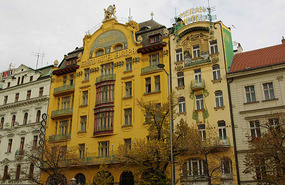
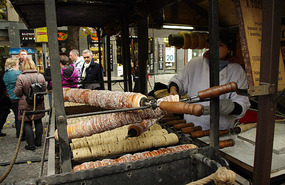
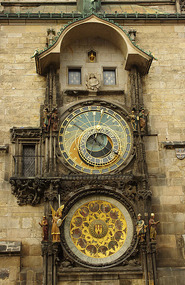
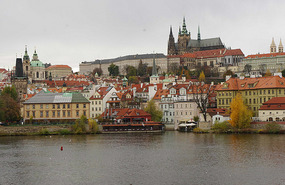
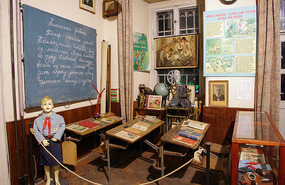
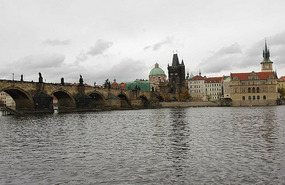
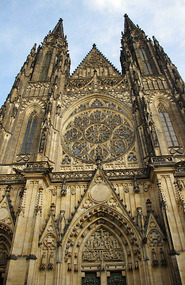
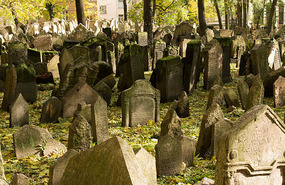
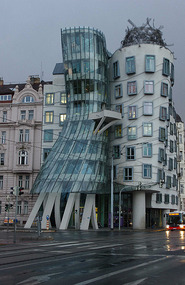






























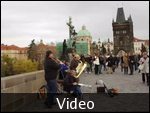




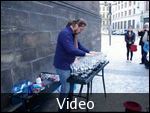
















































MYL
2014-04-19
You should have signed the petitions, just for kicks :) Wes and I were her for a few days to attend an international salsa festival mid November....it was COLD!!!